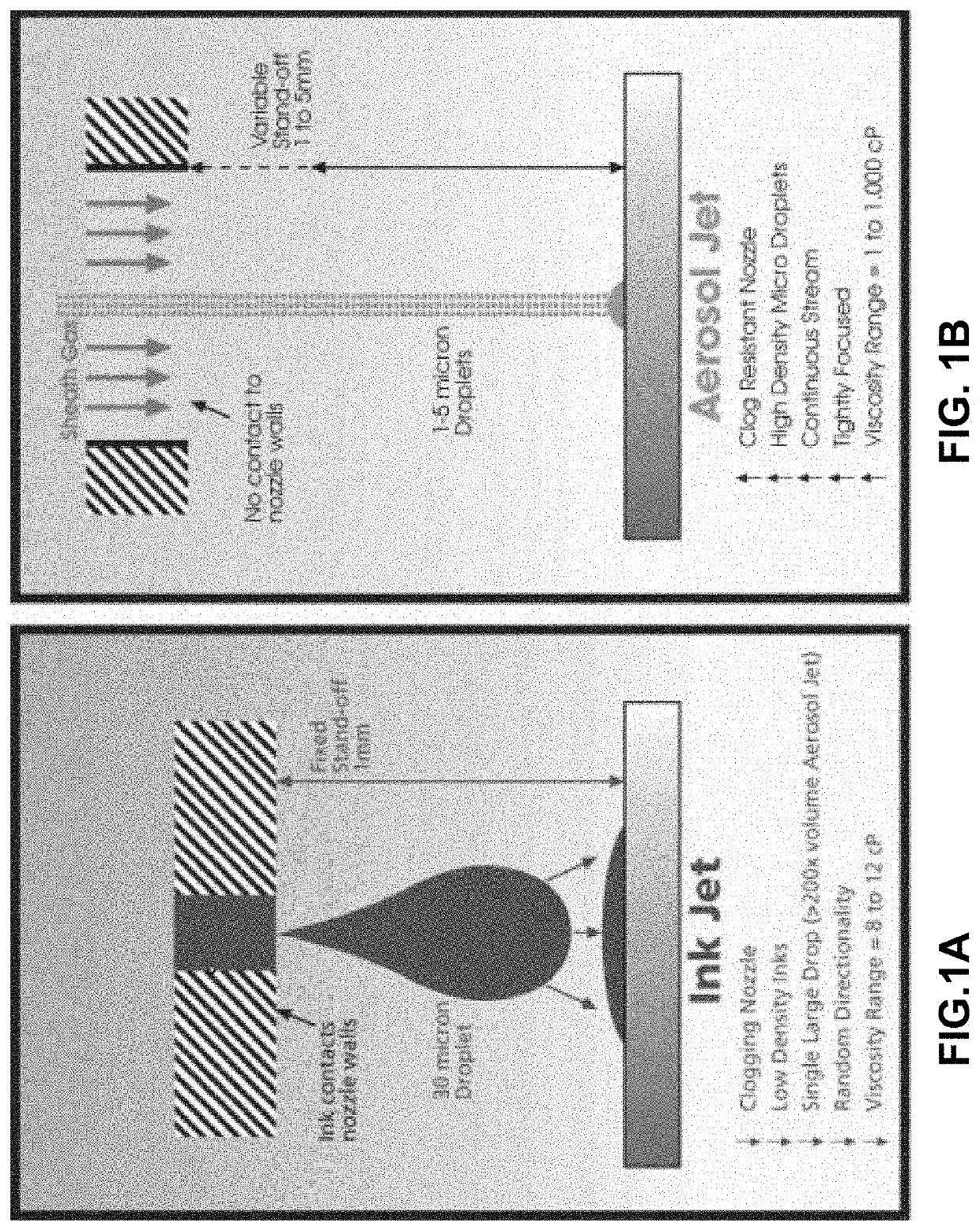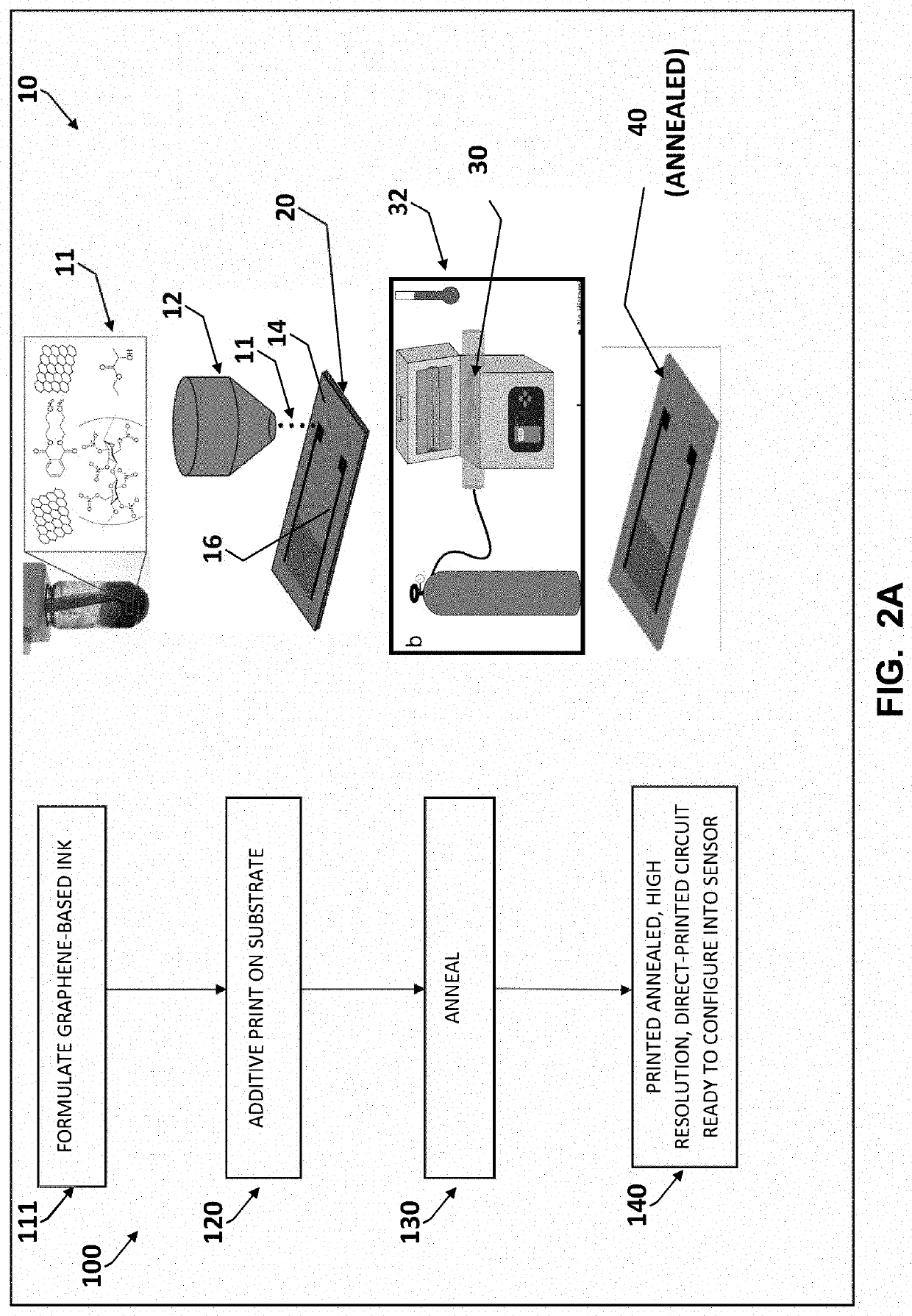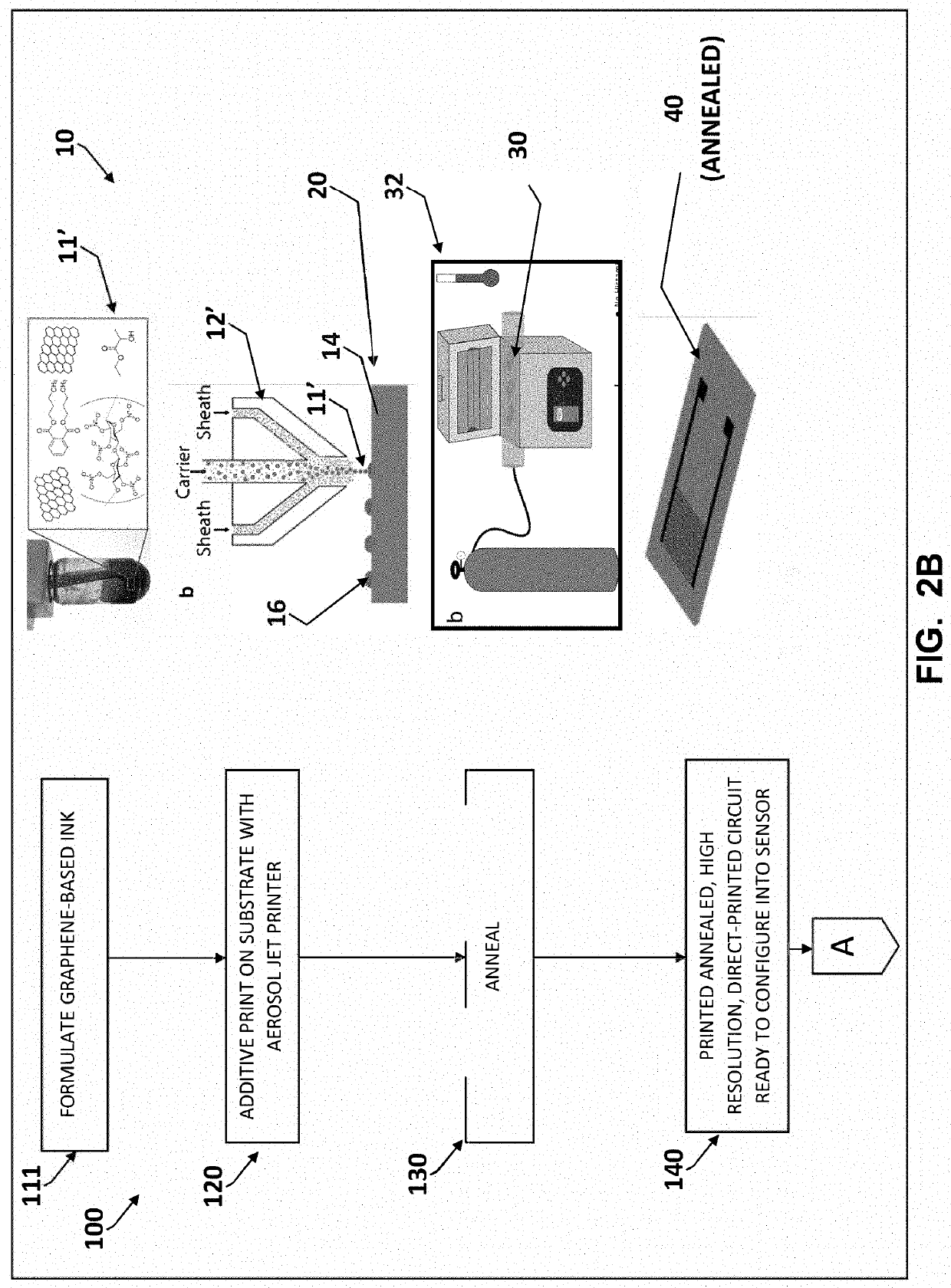Aerosol jet printed flexible graphene circuits for electrochemical sensing and biosensing
- Summary
- Abstract
- Description
- Claims
- Application Information
AI Technical Summary
Benefits of technology
Problems solved by technology
Method used
Image
Examples
embodiment 1 — generalized example
B. Embodiment 1—Generalized Example
[0092]With reference to FIGS. 2A-C, several examples according to embodiments of the invention are illustrated, as further discussed below. As indicated at FIG. 2A, these examples have in common a direct additive printing method 100 and system 10. A graphene-based ink 11 is formulated (step 111). A high resolution pattern 16 of ink 11 is printed on a substrate 14 by additive printer 12 technique to create a printed substrate 20 (step 120).
[0093]Printed substrate 20 can be processed (at ref. no. 30 in FIG. 2A) by annealing by an annealing subsystem 32 to manipulate physical and electrical characteristics of the printed pattern 16 (step 130).
[0094]The result is a direct primed, high resolution patterned substrate 40 with characteristics designed for effective use in sensing applications. One example is that the pattern can function as a high resolution electrode or circuit on any of a variety of possible substrates, including flexible or thin substra...
embodiment 2 specific example
C. Embodiment 2 Specific Example
[0130]An example of proof of concept follows. This is taken from Kshama Parate, Sonal V. Rangnekar, Dapeng Jing, Deyny L. Mendivelso-Perez, Shaowei Ding, Ethan B. Secor, Emily A. Smith, Jesse M. Hostetter, Mark C. Hersam, Jonathan C. Claussen. Aerosol-jet-printed graphene immunosensor for label-free cytokine monitoring in serum, ACS Appl. Mater. Interfaces 2020, 12, 7, 8592-8603, and its Supplementary Information, both of which are incorporated by reference herein in their entireties. It is to be understood this is one example of aspects of the invention.
[0131]Aerosol-Jet-Printed Graphene Immunosensor for Label-Free Cytokine Monitoring in Serum
Abstract
[0132]Graphene-based inks are becoming increasingly attractive for printing low-cost and flexible electrical circuits due to their high electrical conductivity, biocompatibility, and manufacturing scalability. Conventional graphene printing techniques, such as screen and inkjet printing, are limited by r...
embodiment 2
REFERENCES FOR EMBODIMENT 2
[0274](1) Secor, E. B.; Gao, T. Z.; Islam, A. E.; Rao, R.; Wallace, S. G.; Zhu, J.; Putz, K. W.; Maruyama, B.; Hersam, M. C. Enhanced Conductivity, Adhesion, and Environmental Stability of Printed Graphene Inks with Nitrocellulose. Chem. Mater. 2017, 29 (5), 2332-2340.[0275](2) Secor, E. B.; Prabhumirashi, P. L.; Puntambekar, K.; Geier, M. L.; Hersam, M. C. Inkjet Printing of High Conductivity, Flexible Graphene Patterns. J. Phys. Chem. Lett. 2013, 4 (8), 1347-51, DOI: 10.1021 / jz400644c.[0276](3) Jabari, E.; Toyserkani, E. Micro-Scale Aerosol-Jet Printing of Graphene Interconnects. Carbon 2015, 91, 321-329.[0277](4) Finn, D. J.; Lotya, M.; Cunningham, G.; Smith, R. J.; McCloskey, D.; Donegan, J. F.; Coleman, J. N. Inkjet Deposition of Liquid-Exfoliated Graphene and Mos 2 Nanosheets for Printed Device Applications. J. Mater. Chem. C 2014, 2 (5), 925-932.[0278](5) Pandhi, T.; Kreit, E.; Aga, R.; Fujimoto, K.; Sharbati, M. T.; Khademi, S.; Chang, A. N.; Xiong...
PUM
| Property | Measurement | Unit |
|---|---|---|
| Length | aaaaa | aaaaa |
| Length | aaaaa | aaaaa |
| Flow rate | aaaaa | aaaaa |
Abstract
Description
Claims
Application Information
 Login to View More
Login to View More - R&D Engineer
- R&D Manager
- IP Professional
- Industry Leading Data Capabilities
- Powerful AI technology
- Patent DNA Extraction
Browse by: Latest US Patents, China's latest patents, Technical Efficacy Thesaurus, Application Domain, Technology Topic, Popular Technical Reports.
© 2024 PatSnap. All rights reserved.Legal|Privacy policy|Modern Slavery Act Transparency Statement|Sitemap|About US| Contact US: help@patsnap.com










